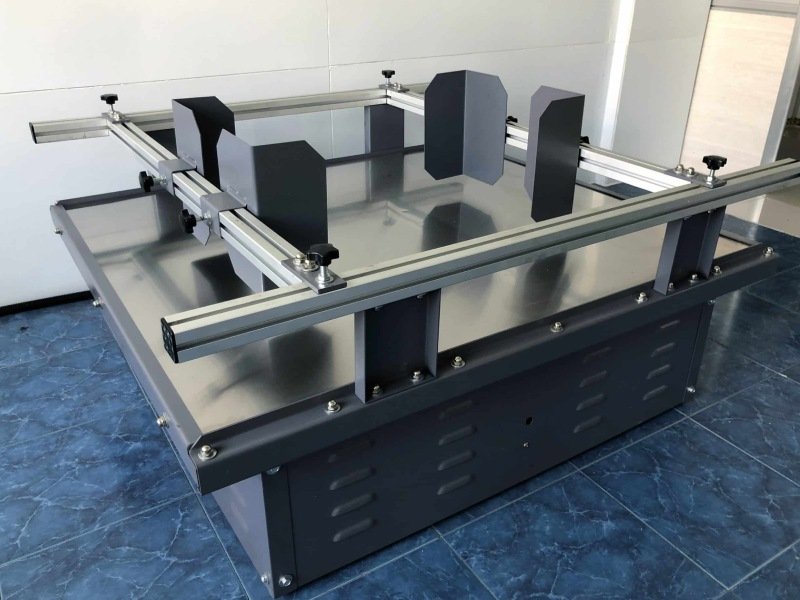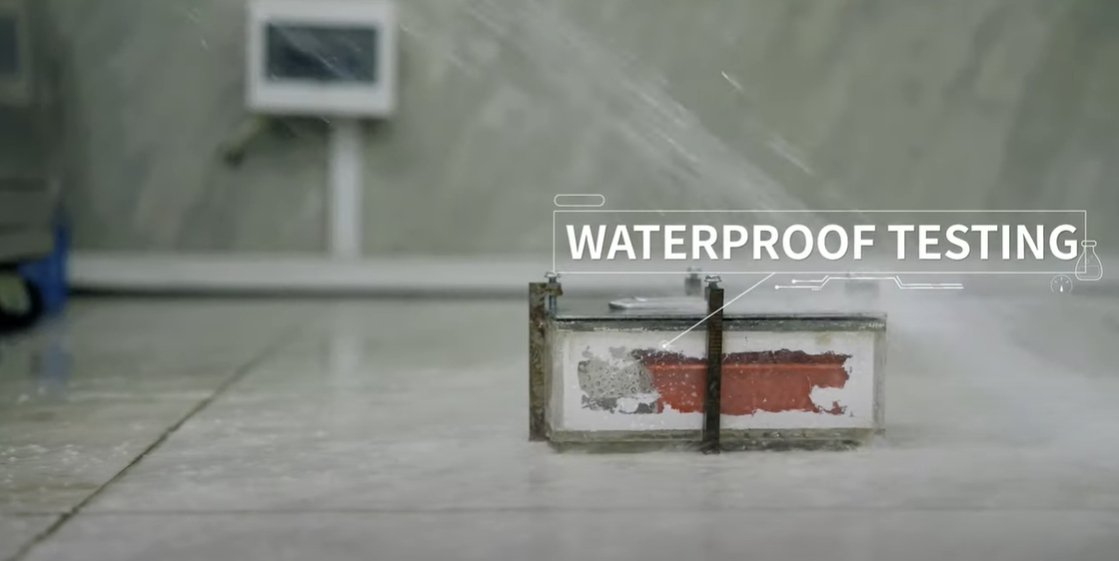Introduction
In the world of electrical engineering, the reliability and longevity of components are paramount. Distribution electrical cabinet latches, though seemingly minor, play a critical role in ensuring the security, safety, and functionality of electrical enclosures. These latches must withstand harsh environmental conditions, including exposure to moisture, salt, and other corrosive elements, particularly in outdoor or industrial settings. Salt spray testing, a standardized method for evaluating corrosion resistance, is an essential tool for engineers and buyers to ensure the quality and durability of these components. This article explores the importance of salt spray testing for distribution electrical cabinet latches, delving into its methodology, benefits, standards, and implications for engineers and buyers in the procurement process.
Understanding Distribution Electrical Cabinet Latches
Distribution electrical cabinets house critical electrical components, such as circuit breakers, wiring, and control systems, that manage power distribution in various applications, from utility grids to industrial facilities. The latches on these cabinets secure the enclosure, protecting the internal components from environmental hazards, unauthorized access, and physical damage. These latches are typically made of metals like steel, stainless steel, or zinc alloys, often coated with protective layers such as electroplating, powder coating, or anodizing to enhance corrosion resistance.
Given their exposure to diverse environmental conditions—ranging from coastal regions with high salinity to industrial environments with chemical pollutants—latches must maintain structural integrity and functionality over extended periods. Corrosion, caused by moisture, salt, or other corrosive agents, can compromise the latch’s mechanical strength, leading to failures such as jamming, breaking, or difficulty in operation. Such failures can expose sensitive electrical components to environmental damage, leading to costly repairs, downtime, or safety hazards. Salt spray testing provides a controlled, accelerated method to assess how well these latches can withstand corrosive environments, making it a critical step in the quality assurance process.
What is Salt Spray Testing?
Salt spray testing, also known as salt fog testing, is a standardized corrosion test method designed to evaluate the corrosion resistance of materials and surface coatings. It involves exposing test samples to a controlled, corrosive environment created by atomizing a sodium chloride (NaCl) solution, typically at a 5% concentration, into a fine mist within a sealed testing chamber. The chamber maintains specific conditions, such as a temperature of 35°C and a neutral pH range of 6.5 to 7.2, to simulate harsh environmental conditions, particularly those found in marine or industrial settings. The test duration varies depending on the material, coating, and industry standards, ranging from a few hours to several thousand hours.
The primary goal of salt spray testing is to accelerate corrosion processes, allowing engineers to observe the formation of corrosion products, such as rust or oxides, in a fraction of the time it would take under natural conditions. By evaluating the appearance and extent of corrosion after a predetermined period, manufacturers can assess the suitability of materials and coatings for specific applications. For distribution electrical cabinet latches, this test ensures that the latches can endure prolonged exposure to corrosive elements without compromising their functionality.
Why Salt Spray Testing is Essential for Electrical Cabinet Latches
1. Ensuring Long-Term Durability
Electrical cabinet latches are often exposed to harsh environmental conditions, including high humidity, saltwater, and industrial pollutants. In coastal regions, for example, chloride ions from sea salt can penetrate the protective coatings of metal latches, leading to electrochemical corrosion. This corrosion can weaken the latch, causing it to fail prematurely. Salt spray testing allows manufacturers to predict the long-term durability of latches by simulating these conditions in a controlled environment. By identifying potential weaknesses in materials or coatings early in the design process, engineers can select or develop latches that meet the durability requirements of their intended applications.
For engineer buyers, understanding the corrosion resistance of latches is critical when procuring components for outdoor or industrial electrical cabinets. A latch that fails due to corrosion could lead to cabinet doors becoming unsecured, exposing sensitive electrical components to moisture, dust, or vandalism. Salt spray test results, typically reported as the number of hours a latch withstands without significant corrosion (e.g., 720 hours in neutral salt spray per ISO 9227), provide a quantifiable metric for comparing different latch designs and coatings.
2. Compliance with Industry Standards
The electrical industry operates under stringent standards to ensure safety, reliability, and performance. Salt spray testing is governed by international standards such as ASTM B117 and ISO 9227, which outline specific test conditions and procedures. These standards ensure consistency and repeatability, allowing buyers to compare the corrosion resistance of latches from different manufacturers objectively. For example, ASTM B117 specifies a 5% NaCl solution and a test temperature of 35°C, while ISO 9227 includes variations like the neutral salt spray (NSS), acetic acid salt spray (ASS), and copper-accelerated acetic acid salt spray (CASS) for different coating types.
For latches used in electrical cabinets, compliance with these standards is often a requirement in material specifications, particularly in industries like utilities, telecommunications, and marine applications. Buyers can rely on salt spray test results to verify that latches meet these standards, ensuring that the components will perform reliably in real-world conditions. Non-compliance could result in costly recalls, warranty claims, or safety violations, making salt spray testing a critical checkpoint in the procurement process.
3. Quality Assurance and Process Control
Salt spray testing is not only used to evaluate the final product but also to monitor the consistency of manufacturing processes, such as electroplating, galvanizing, or powder coating. Variations in the application of protective coatings can significantly affect corrosion resistance. For instance, a poorly applied electroplated zinc coating on a steel latch may fail to protect against corrosion, leading to white rust within a short period (e.g., 96 hours in NSS). By conducting salt spray tests, manufacturers can identify instabilities in their coating processes and make necessary adjustments to ensure consistent quality.
For engineer buyers, this aspect of salt spray testing is particularly valuable. It provides assurance that the latches they procure have undergone rigorous quality control, reducing the risk of receiving defective or substandard components. Buyers can request test reports or certifications from suppliers to verify that the latches have passed industry-standard salt spray tests, ensuring that the components meet the required performance criteria.
4. Preventing Costly Failures
Corrosion-related failures in electrical cabinet latches can have significant consequences, including equipment downtime, repair costs, and safety risks. For example, a corroded latch may fail to secure the cabinet properly, allowing water ingress that damages sensitive electrical components. This can lead to system failures, power outages, or even electrical hazards. Salt spray testing helps mitigate these risks by identifying potential corrosion issues before the latches are deployed in the field. By selecting latches that have demonstrated strong corrosion resistance in salt spray tests, buyers can reduce the likelihood of costly failures and ensure the reliability of the electrical distribution system.
5. Supporting Material and Coating Selection
Salt spray testing provides valuable data for comparing the corrosion resistance of different materials and coatings. For instance, a stainless steel latch may perform better in a salt spray test than a zinc-plated steel latch, but it may also be more expensive. Similarly, advanced coatings like ruspert may outperform traditional black oxide coatings, lasting up to 800 hours in salt spray tests compared to 24–96 hours for black oxide. By analyzing test results, engineers can make informed decisions about material and coating selections that balance performance, cost, and application requirements.
For buyers, this data is crucial for evaluating trade-offs between cost and durability. For example, in a marine environment, investing in latches with superior corrosion resistance (e.g., stainless steel or advanced coatings) may be justified to ensure long-term performance. Salt spray test results provide a clear, quantifiable basis for these decisions, helping buyers select the most cost-effective and reliable latches for their specific needs.
The Salt Spray Testing Process for Latches
The salt spray testing process for distribution electrical cabinet latches follows a standardized procedure to ensure accurate and repeatable results. Below is an overview of the key steps involved:
-
Sample Preparation: Latch samples are prepared according to the test standard. This may involve cleaning the samples to remove contaminants and, in some cases, scribing the surface to expose the underlying metal. For example, ASTM B117 requires samples to be tilted at a 15–30° angle from the vertical to ensure uniform exposure to the salt fog.
-
Test Chamber Setup: The latches are placed in a sealed salt spray chamber equipped with a spray system that atomizes a 5% NaCl solution. The chamber maintains a constant temperature of 35°C and a neutral pH (6.5–7.2) for NSS tests. The spray system ensures uniform fog distribution across all samples.
-
Exposure Period: The test duration varies depending on the material, coating, and industry requirements. For electrical cabinet latches, common test durations range from 48 to 1,000 hours. For example, a zinc-plated steel latch with yellow passivation may be tested for 96 hours to check for white rust, while a stainless steel latch may be tested for 720 hours or more.
-
Monitoring and Maintenance: During the test, parameters such as temperature, humidity, and salt solution concentration are monitored daily to ensure compliance with standards. The chamber is cleaned regularly to prevent salt buildup, and nozzles are checked for blockages to maintain uniform spray distribution.
-
Evaluation: After the test, samples are removed, rinsed with deionized water, and dried with compressed air. They are then inspected for signs of corrosion, such as rust, pitting, or discoloration. The extent of corrosion is compared against predefined criteria or standards to determine the latch’s performance.
-
Reporting: Test results are documented, typically as the number of hours the latch withstood without significant corrosion. Additional metrics, such as coating thickness or electrical conductivity, may be measured for electronic components integrated into the latch.
Industry Standards and Their Relevance
Several international standards govern salt spray testing, ensuring consistency and reliability across industries. The most relevant standards for electrical cabinet latches include:
-
ASTM B117: The most widely used standard for salt spray testing, specifying a 5% NaCl solution, 35°C temperature, and neutral pH. It is commonly used to test latches with coatings like electroplated zinc or powder coatings.
-
ISO 9227: An international standard that includes NSS, ASS, and CASS tests. NSS is used for general corrosion testing, while ASS and CASS are used for decorative coatings like copper-nickel-chromium.
-
IEC 60068-2-11: A standard for environmental testing of electrical and electronic components, including salt spray tests. It is particularly relevant for latches with integrated electronic features, such as smart locks.
-
MIL-STD-202: A military standard for testing electronic and electrical components, including salt spray tests for connectors and latches used in harsh environments.
These standards provide a framework for buyers to evaluate latch performance objectively. For example, a latch certified to withstand 720 hours in NSS per ISO 9227 is likely suitable for marine or coastal applications, while a latch that passes 96 hours may be adequate for less demanding environments.
Limitations of Salt Spray Testing
While salt spray testing is a valuable tool, it has limitations that engineer buyers should consider:
-
Limited Real-World Correlation: Salt spray testing accelerates corrosion but may not fully replicate real-world conditions, which include temperature variations, mechanical stress, and other environmental factors.
-
Focus on Salt Corrosion: The test primarily evaluates corrosion caused by chloride ions and may not account for other corrosive agents, such as industrial chemicals or UV exposure.
-
Test Duration Variability: The duration of the test does not directly correlate to service life, as real-world corrosion depends on specific environmental conditions. Buyers must interpret test results in the context of their application.
To address these limitations, some manufacturers complement salt spray testing with cyclic corrosion tests (e.g., ASTM G85 Annex A5), which alternate between salt spray, drying, and humidity phases to better simulate real-world conditions.
Practical Implications for Engineer Buyers
For engineer buyers procuring distribution electrical cabinet latches, salt spray testing provides critical insights into component quality and performance. Here are key considerations:
-
Specify Test Requirements: When issuing procurement specifications, include requirements for salt spray testing, such as compliance with ASTM B117 or ISO 9227 and a minimum test duration (e.g., 720 hours for marine applications). This ensures that suppliers provide latches that meet the necessary corrosion resistance standards.
-
Request Test Reports: Ask suppliers for detailed salt spray test reports, including the number of hours tested, the type of coating, and the extent of corrosion observed. Third-party certifications from accredited labs can further validate the results.
-
Evaluate Cost vs. Performance: Compare the corrosion resistance of different latches based on test results. For example, a stainless steel latch may cost more upfront but offer superior durability in harsh environments, reducing long-term maintenance costs.
-
Consider Application-Specific Needs: Match the latch’s corrosion resistance to the environmental conditions of the application. For instance, latches for coastal utility cabinets may require longer test durations (e.g., 1,000 hours) than those for indoor industrial cabinets.
-
Incorporate Cyclic Testing: For critical applications, consider requiring cyclic corrosion tests in addition to standard salt spray tests to better simulate real-world conditions.
Innovations in Salt Spray Testing
Advancements in salt spray testing technology are enhancing its effectiveness and relevance. For example, modern test chambers, such as the LISUN YWX/Q-010, feature precise control systems for temperature, humidity, and spray frequency, ensuring consistent and repeatable results. Some chambers also incorporate electrochemical methods, like impedance spectroscopy, for real-time corrosion monitoring. Additionally, multi-environment chambers that combine salt spray with other factors, such as UV exposure or temperature cycling, provide a more comprehensive evaluation of latch performance.
Emerging technologies, such as nanotechnology-based coatings and AI-driven corrosion prediction models, are also improving the corrosion resistance of latches and the accuracy of test results. These innovations enable buyers to select latches with enhanced durability and reliability, even in the most challenging environments.
Conclusion
Salt spray testing is a cornerstone of quality assurance for distribution electrical cabinet latches, ensuring that these critical components can withstand corrosive environments and maintain functionality over their service life. By simulating harsh conditions, such as those found in marine or industrial settings, salt spray testing helps manufacturers identify weaknesses in materials and coatings, ensuring that only high-quality latches reach the market. For engineer buyers, understanding the results of salt spray tests is essential for making informed procurement decisions, balancing cost, performance, and application requirements.
By specifying rigorous test standards, requesting detailed test reports, and considering innovations in testing and coating technologies, buyers can procure latches that meet the highest standards of durability and reliability. Ultimately, salt spray testing not only protects the integrity of electrical distribution systems but also contributes to safety, cost savings, and operational efficiency in the long term.







